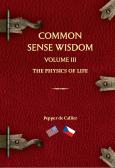A Creative Approach to Career Development
Being creative isn’t just for artists, authors, and musicians. All of us can, and should, think about our careers creatively – working with the raw materials at hand to make something unique. In the context of career development, these raw materials might include your education and training accomplishments, past working experiences, interests and hobbies, volunteer service, as well as skills and abilities.
While there are contradictory reports about how frequently we tend to change jobs or even careers over the span of our working lives, it’s safe to say that working for the same employer for 20 years is not as common as it might have been for our parents or grandparents. The economy and jobs market fluctuations force us to think outside the box, as it were, at a range of possible career directions, which include emerging fields and job titles we may not have considered before but in which we are qualified to perform.
Several weeks ago I attended a lecture featuring local artist Nathan Durfee and his presentation of a new collection of paintings. The theme of the show was the story of a dog, Bartholomeux, trying to find his place, his passion, as a musician. A fantastical story, it’s true, but I was struck by the messages for modern career development in Durfee’s reflection on his own process, and this dog’s tale of trial and error and ultimate triumph with an unexpected instrument and audience.
CREATIVE CAREER DEVELOPMENT LITERACIES
What follows is my list of competencies inspired by Durfee and Bartholomeux. Relevant messages can be found in other artists’ work as well, to guide us in the many decisions related to career development and planning in general.
- Constructive Thinking and Efficiency: Durfee said of his technique that “I stick to what I’ve made up and build on it.” This applies well to career changers. Once you are headed down a particular path, if you find the need or desire to pursue a new field, you don’t have to start over from scratch. Evaluate what you’ve experienced and learned so far – and build on the pieces that work, taking them in new directions.
- Resourcefulness and Flexibility: Pablo Picasso, whom many consider the greatest artist of the 20th century, reportedly said of his creative process, “When I haven’t any blue, I use red.” This speaks to both efficiency and moving forward, even if you don’t have all of the ideal resources. When you hit a career wall or job search limitation, take a closer look at what you have available in terms of raw materials. Remain open to the possibilities and don’t box yourself in.
- Persistence and Focus: Steve Martin’s career advice is more direct. He said, “be so good they can’t ignore you.” This quote is included in a recent Lifehacker article that tells us how to build careers we love. The author suggests you “stop worrying about what your job offers you … put your head down and focus on becoming valuable.” Honing your skills takes time. Martin found no easy or quick route to becoming experienced, and is an example of someone whose career has taken many different paths as a musician and writer, actor and comedian.
- Applied Practice and Continued Learning: As an online student, you may have already developed a desire for lifelong learning and know the advantages of broadening your horizons. Picasso expressed his own need for added knowledge and skills when he said, “I am always doing that which I cannot do, in order that I may learn how to do it.” And not long after I heard Durfee’s presentation, I read a story about cellist and conductor Pablo Casals. When asked at age 93 why he continued a routine of daily practice he responded, “I’m beginning to notice some improvement,” encouragement to always consider yourself a student.
EVALUATING YOUR PRACTICAL EXPERIENCE
So, how can you reframe your own career development with a creative approach? Beyond inspiring speeches and quotations, there are a few steps you can take. Start with your current resume:
- Cross out the job titles so you can focus on tasks and accomplishments. What was your favorite assignment in each position you’ve held? Where were you the most skilled? Try this for your education and training entries, too. What did you like best about these programs?
- Look for common themes in the items you identify across jobs and learning opportunities. You may also see your work values emerge with greater clarity. Did these tasks involve specific skills, materials, equipment, contexts, work environments?
- Honestly assess your tech skills in each position. Technology is no longer a separate field and almost all of us will encounter it on-the-job at some point. One key to taking off in a new direction may be your ability to learn and apply new technology-related skills. BigThink.com’s 12 Certainties that Will Transform Every Career and Create New Ones are firmly focused on “getting ahead of the curve” to prepare for the workplace of the future.
- Make a list of keywords that describe the tasks you enjoy and define your skills. Try searching for these on large job boards and on LinkedIn. You may find more than you expect in terms of the range of fields and companies that have current openings with these items in common.
It continues to be critical that you match your interests, skills, and values with the workplace, but the lines are not as clearly drawn as they once were. Work with your Career Center’s advisors to dig a little deeper into your own experience and learn how to translate what you’ve done and what you have the potential to do in a variety of employment situations. Be ready to evolve along with the changing world of work, preparing to fulfill multiple possible roles across industries. You may even end up going in a new direction.




